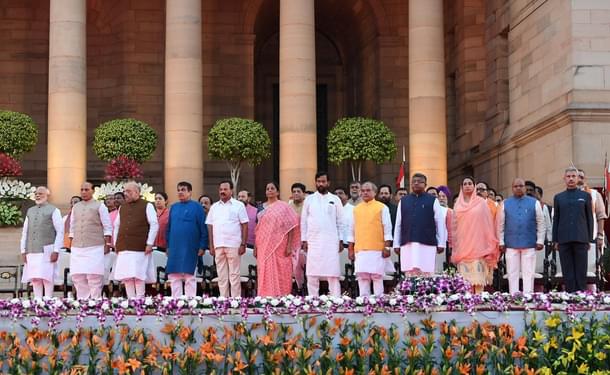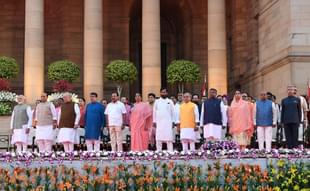Economy
An Agenda Of Reforms
Karan Bhasin
Jun 01, 2019, 12:02 PM | Updated 12:02 PM IST
Save & read from anywhere!
Bookmark stories for easy access on any device or the Swarajya app.


With elections behind us, it is important to shift the focus back on the Indian economy which is dealing with its own set of challenges over the last couple of quarters. The recent growth results suggest that there has indeed been a systematic slowdown since FY2018-19.
Overall, the economy has performed well during the first four years of the previous government, more so when one considers the fact that India witnessed two successive droughts, extremely high real interest rates, a hostile and uncertain global economic environment combined with a series of disruptive domestic structural reforms.
Despite getting a lot of things right on the economic front, there is no denial that there is a lot more that needs to be done to sustain this momentum and the first step should be in understanding the reasons behind the recent slide in growth.
The figure below categorically demonstrates the sharp increase in the real repo rates during 2018, which coincides with the subsequent slowdown in the Indian economy. Therefore, one can safely conclude that this slowdown could be (and should be) attributed to the sharp increase in the real interest rates combined with a liquidity gap that has persisted for a couple of quarters.


The fact that the Reserve Bank of India did take remedial steps from January onwards is encouraging. However, there is a genuine need to re-examine the efficacy of our inflation targeting regime and the monetary policy framework. With investments starting to revive, it would be crucial to bring down the cost of capital by reducing interest rates.
It is also important to reflect upon the reasons behind the low inflation rates that have persisted over the last five years: it is the low growth in procurement prices (Minimum Support Prices) and the softening of commodity prices across the globe and not so much of interest rates that kept inflation under check.
While lowering of interest rates may help address the supply side of the economy, it is also important to recognise that the slowdown over the last three quarters is likely to be a temporary slowdown and that demand is likely to bounce back after the election as discretionary consumption picks up.
There is still a need to further invest in state capacity and infrastructure projects and, therefore, we should expect further expansion in the infrastructure sector over the next couple of years. Doing away with rigid fiscal rules should be the first step in this direction and the government must realise that it is not the deficit that matters but the composition of expenditure (This has been highlighted in an earlier article that can be accessed by clicking here).
Additionally, despite multiple reforms initiated by the previous tenure, there is still a need for further reforms to strengthen the economy. For starters, labour reforms and the infamous Industrial Disputes Act (IDA) have had a negative impact on industry as it disincentivises firms to scale up their operations.
Consequentially, the government did decide to merge 44 reforms into four labour codes. However, they’re still stuck at the parliamentary stages. Moreover, there is a genuine concern with the draft labour code on Industrial Relations as they retain the original provision of the IDA, which requires prior permission from the government for firms with more than 300 employees (it has been increased from 100 employees under the previous law) before retrenchment of workers. Doing away with this provision would be critical for the growth of small and medium industries (A detailed article that explores this issue can be accessed by clicking here).
Another area which lacked adequate policy focus since Independence is extension of primary and secondary education across India. Though policies such as mid-day meals and the Right to Education Act have managed to improve enrolment levels, however, they’ve brought into focus the declining quality of education that is being provided to students in government schools.
A potential solution to this problem is an education voucher system as advocated by Milton Friedman in the US. The framework for the same would be like the Direct Benefit Transfer (DBT) model as implemented by the government for over 430 of its schemes whereby the government will issue cash equivalent to eligible students in their bank accounts which can be used only for tuition fee and uniform expenses.
Such a system will bring in private players into primary and secondary schools and it will give students and their parents to pick a school that offers their students the best quality of education. Additionally, the government can design vouchers that incentivise greater attendance by providing cash top-ups over the voucher value. The government should explore education vouchers as a policy tool for primary and secondary education system during its term.
The government should also reimagine its agricultural policy, especially with respect to the price policy as a tool for providing income support to farmers. In a recent paper with Dr Surjit Bhalla, we found the ineffectiveness of price policy as a tool for income support and consequentially, we advocated for a direct income support to the farmers based on the DBT framework. We had further argued that India’s poverty alleviation programmes have witnessed significant leakages and, therefore, direct income support or targeted basic income should be the norm going forward.
As is the case, the government has made a shift from the price policy as it launched the PM-Kisan Saman Nidhi Yojana which has now extended to cover all the farmers in the country. However, it must now think about extending the basic income support to all poor in India (The paper will be updated and revised shortly. It can be accessed by clicking on this link.
The Indian economy has come a long way since the earliest wave of reforms during early 1980s, but the process of reforms has been sporadic and slow. The next wave of reforms occurred only in 1991, and it was followed by subsequent reforms between 1991-2004. Unfortunately, between 2004-2013, only Foreign Direct Investment (FDI) norms were changed and India witnessed a decade without any structural reforms. We made a departure from this slow and sporadic nature of reforms between 2014-2019 and it would be wise to continue with this trend.
In its previous tenure, the government got a lot of things right and now is the time to correct its few mistakes and continue the path of economic reforms. It is through such reforms that we would be able to sustain our current growth rates and further transform our economy. Some of the required reforms are likely to be politically challenging but PM Modi has got both, the political will and a strong team to implement such reforms.





